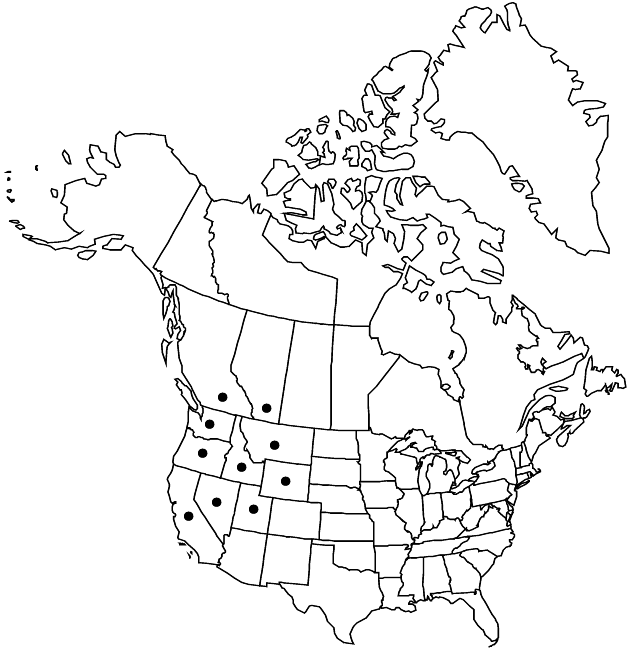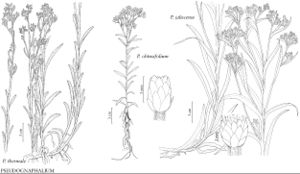Pseudognaphalium thermale
Sida 21: 781. 2004.
Perennials, (20–)30–70 cm; taprooted. Stems loosely tomentose, not glandular. Leaf blades narrowly oblanceolate, 3–8 cm × 3–6 mm (gradually smaller distally, becoming linear), bases not clasping, decurrent 5–14 mm, margins flat, faces concolor, loosely tomentose, sessile-glandular beneath tomentum. Heads in loose to dense, corymbiform to paniculiform arrays. Involucres turbinate-campanulate, (4–)5–6 mm. Phyllaries in 3–4(–5) series, whitish (hyaline or opaque, usually shiny, sometimes dull), ovate to ovate-oblong (outer broadly acute, inner rounded-apiculate), glabrous. Pistillate florets 35–55. Bisexual florets (2–)4–7. Cypselae ridged, densely papillate-roughened.
Phenology: Flowering Jun–Sep(–Oct).
Habitat: Dry, sandy road banks, roadside ditches, streambeds and banks, lakeshores, granitic sand, open woods of yellow pine, Jeffrey pine, red fir, Douglas fir, mixed conifer, and mixed evergreen
Elevation: (50–)300–2300(–2500) m
Distribution

Alta., B.C., Calif., Idaho, Mont., Nev., Oreg., Utah, Wash., Wyo.
Discussion
Selected References
None.
